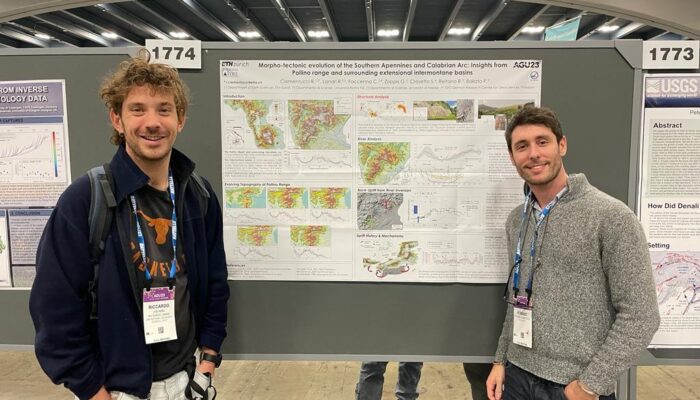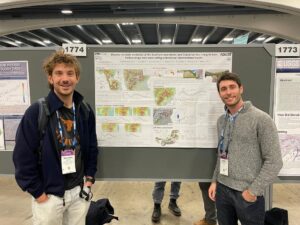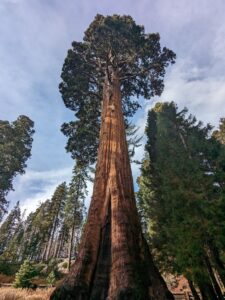
by Romano Clementucci, PostDoc, ETH Zurich (Switzerland)
Twitter: @RomanoClementu1 | email: rclementucci@erdw.ethz.ch
As postdoctoral researchers, advancing our careers often involves attending an international congress. In December 2023, I achieved this goal by participating in AGU23, marking my first attendance after several consecutive years at EGU. It was exhilarating to share my research with a new community and engage in meaningful discussions.
The experience provided not only a platform for academic exchange but also an exciting opportunity to explore San Francisco and California at large. After years of attending EGU, AGU23 offered a fresh perspective and a chance to connect with a different scientific community. All in all, it was a rewarding endeavor both professionally and personally.
As a tectonic geomorphologist, I explore the intricate interplay between deep-seated geological processes and surface dynamics, elucidating how they collectively shape the Earth’s surface. My research spans different timescales, ranging from understanding mountain building and plate dynamics to deciphering the impacts of climate and human activities on surface processes.

Figure 2: R. Lanari and I at the poster session, discussing the tectonic evolution of the Calabria Arc and Southern Apennines. Photo credit: Gabrielle Vance.
I presented my ongoing research in two sessions focused on the impact of tectonics, climate, and erosion on the evolution of mountain belts. This included both an oral presentation and a poster (Fig. 2). I enjoyed the chance to delve into the details of my work with engaged colleagues and benefited greatly from the engaging conversations throughout AGU23. AGU attracts scientists from all over the world, providing an excellent opportunity for networking. This renders AGU a unique conference that everyone should participate in, though the high costs may pose accessibility challenges for some.

Figure 3: General Sherman Tree in Giant Sequoia National Park, the largest tree in the world by volume. Note the estimated age of 2,300–2,700 years.
For a European researcher, in addition to the conference itself, it’s worthwhile to experience the conference location. San Francisco offers a diverse array of activities and California vibes. In my case, I decided to travel for a week to explore the incredible Yosemite and Sequoia National Parks, which are conveniently situated not far from San Francisco (Fig. 3).
.



